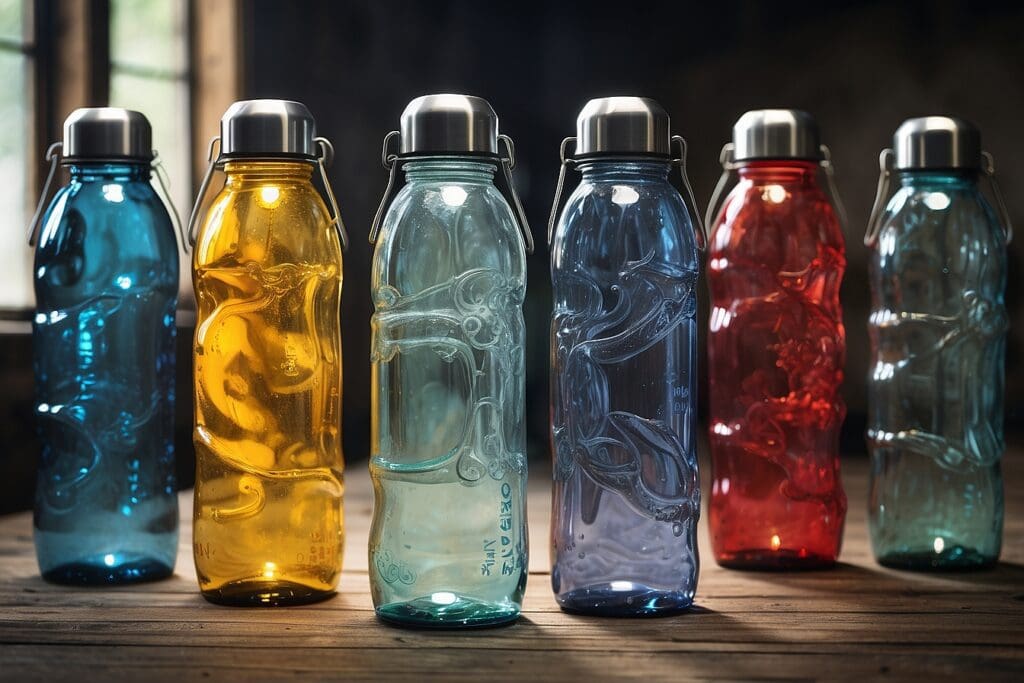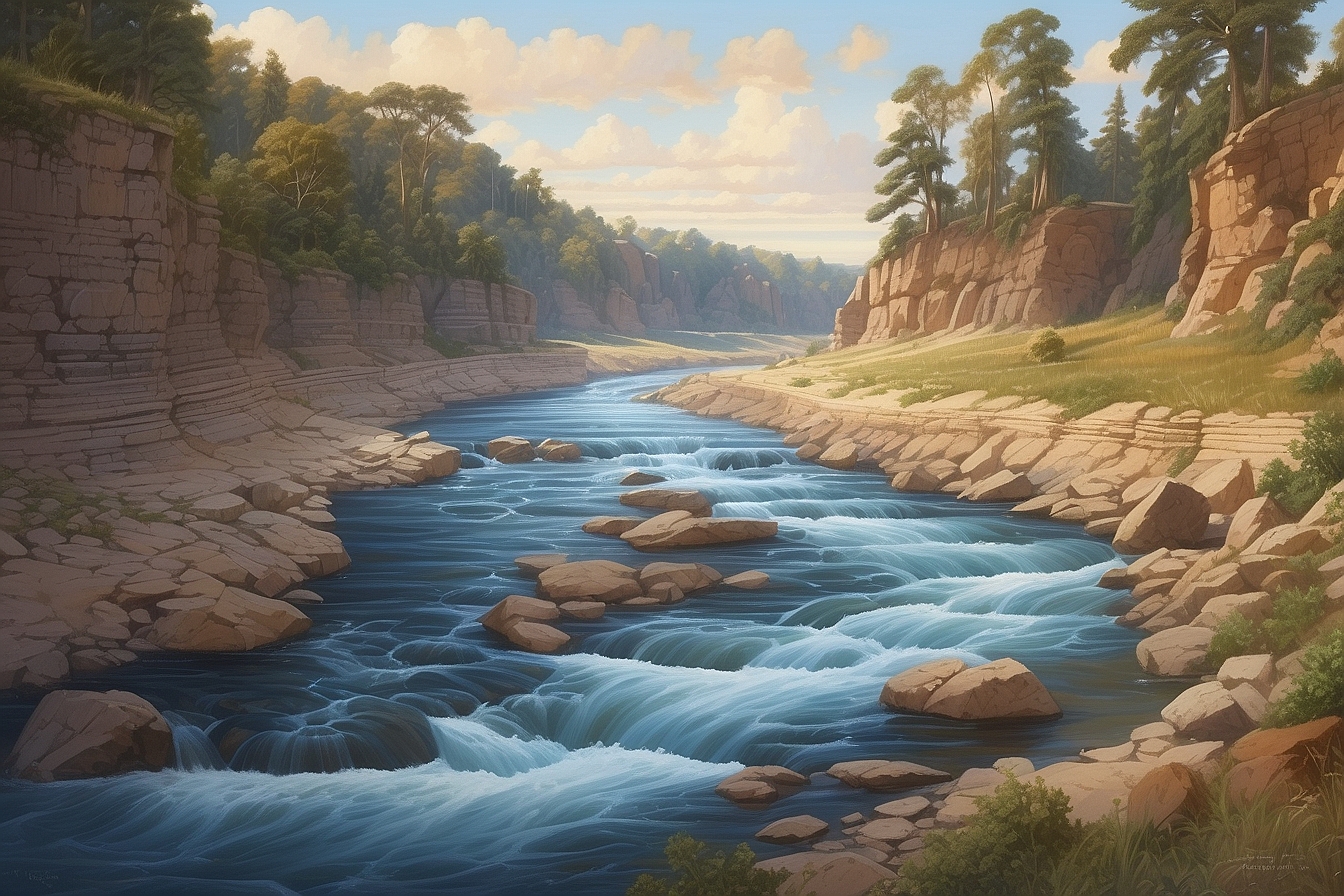Most people are aware that drinking bottled water is wasteful, hence the craze behind reusable water bottles such as Sigg or Nalgene. However, it was not until the recent economic downturn that the consumption of bottled water finally slowed down for the first time this decade. Since its conception in the mid 1970s, bottled water has risen in popularity and is now America’s third favorite beverage to buy behind only soda. But drinking bottled water isn’t bad for the environment simply because of the plastic waste involved with its consumption. Small towns across the country are having to confront large companies who wish to set up shop and buy public water at an astonishingly low price while leaving the communities dry and with little economic gain. So exactly how bad is bottled water for the environment and for your health?
The Arguments
I am for bottled water because…
1. Convenience. Grab a bottle from your fridge and take it to the gym, school, or work. Better yet, buy it on the spot when you are thirsty! There is no need to look for your reusable water bottle that you are always misplacing, wash it, and then fill it with water that is probably not cold. Then you have to try and shove ice through its narrow neck. By now you are irritated and late for your pilates class. (A bit of an anecdote, but you get the idea.)
2. Once you buy a case of bottled water there is no need to purchase a reusable canteen or water bottle because now you have 24 empty plastic water bottles that can be reused at least a few times before the plastic begins to wear and they are unsafe to drink from. Plus, reusable bottles are often expensive, especially with this new water bottle craze.
3. Bottled water has a longer expiration period than water stored in a reusable bottle. If you buy a gallon of bottled water it will taste the same even if you decide to drink it six months from now. However, fill a clean canteen with water and in a few days it tastes stale.
I am against bottled water because…

1. Drinking bottled water is incredibly wasteful. Every year 2.7 million TONS of plastic is used worldwide to make plastic water bottles. Experts predict that more than 80 percent of those bottles end up in landfills or are incinerated instead of being recycled. In the United States alone it is estimated that 32 to 54 million barrels of crude oil were used to make the plastic water bottles in the year 2007 alone.
2. Drinking bottled water is actually not healthier than drinking tap water, in fact, research shows that it may be contributing to cavities. Fluoride is a common additive in public tap water, which is proven to prevent cavities, yet bottled water companies claim their water to be such things as “pure” and “all-natural” and do not use fluoride. The result is an increase in tooth decay, even in children as young as three years old.
3. Not only does bottled water have negative environmental implications, but many a time it has negative social outcomes as well. This topic will be addressed more in the “Small Towns” section below.
4. It is expensive! The average gallon of bottled water costs around $10 but a gallon of tap water on average costs less than one cent.
5. Tap water is actually better for your health than “all natural” water such as bottled spring water. (See the next section for more details).
6. Put simply, it is a waste of energy. Through the production and delivery processes, bottled water uses 1,100 to 2,000 more energy than does tap water.
7. It takes away a coveted public resource and uses it for private enterprise. Glacial and spring water is a public resource that is needed to refill our streams and support our agricultural system. If private enterprises are purchasing this water our recent droughts and water wars will only intensify.
Tap Water Versus Bottled Water
Regulation in the U.S. Surprisingly enough, tap water and bottled water are treated as entirely different products and because of this are regulated entirely differently. First off, the Environmental Protection Agency (EPA) watches over tap water safety while the Food and Drug Administration (FDA) overviews the safety of bottled water. Because tap water is designed to serve the general public it is more heavily scrutinized and tested than bottled water. Tap water is disinfected and filtered to remove pathogens and must not contain any traces of E. Coli nor Fecal Coliform. Tap water is also monitored for intestinal diseases such as Crypto-sporidium and Giardia, Abestos, and for viruses. Bottled water is not required to be tested for any of these. And while bottled water is tested for bacteria once a week, tap water is required to be tested hundreds of times per month.
The EPA requires that the public be informed if its tap water is contaminated in any way and public water facilities must report when contamination has occurred. Bottled water companies, which are private businesses, do not fall under the same mandates.
Health
It is a common misconception that bottled water is healthier than tap water because it comes from an all natural source. But just because water is bottled doesn’t mean it comes straight from a glacier or a snow melt. In fact, 40 percent of bottled water is just tap water, and it is no more healthy than tap water because it contains less additives that are used to combat pathogens. However, in 2008 the Environmental Working Group discovered that many bottled water companies use chemicals and even chlorine in their water, demonstrating that bottled water is not as pure as people may believe it to be.
Small Towns: Exploitation and Fighting Back
The bottled water industry knows that the best water usually comes from pristine and remote places that receive their water supply from freshly melted snow or glaciers. Companies send water scouts that find new water sources and then proceed to build a relationship with the local town in order to convince its residents that building a water extraction and bottling plant will benefit the local economy.
Let’s turn our attention to McCloud, California, a small town located on Mount Shasta, a significant and natural source of water for the state. McCloud was a town whose economy was once based on the lumber industry, but as the trees diminished the town soon found itself suffering from high rates of unemployment. In early 2003, members of McCloud’s board signed off on a contract with Nestle, the largest bottled water company in the world, in order to boost the economy, yet did so without public consent. After citizens reviewed the contract, many of them felt like Nestle was getting the water for free. The company would only need to pay the town $350,000 a year and create only 140 jobs. However, the plant would not be responsible to pay for any environmental damages such as salmon depletion due to low water levels or clean up of released toxins. The town became divided. Some wanted the jobs and the money and others wanted to preserve the natural water source that was rumored to be some of the finest in the world and account for the slow aging of its residents. Both sides fought vehemently over the water rights to the point where tires were slashed and government officials were accused of bribery. Some locals were even forced to move out of town due to harassment. In August of 2008, after excessive disapproval from locals that included the Protect Our Waters Coalition, established just to defeat Nestle, the company decided that it would cancel its bottling plant in McCloud. The environmental impacts, said the residents, were simply too controversial.
The story of McCloud is sadly not a unique one. Most famously is the war between Nestle and locals of the Great Lakes Region. The company once extracted 700,000 gallons of water per day from the Great Lakes Region. However, environmentalists and locals became concerned with water depletion, especially for adjacent wetlands and streams that depended on these sources of water, and they prompted a new agreement that now limits Nestle’s extraction to 313,000 gallons per day. Though this number is much less than its initial extraction amount, citizens are still concerned as they see wetlands and streams stay dry year-round. Citizens will no doubt continue the on going battle against Nestle for a long time to come.
Alternatives: Water Filtration Systems If you are a citizen who finds tap water wholly unappealing, the alternative is to have an at home water filtration system. Water filtration systems don’t have to be expensive. Brita is an international company that offers a variety of systems that include relatively inexpensive filtration systems, including pitchers that you fill up in the fridge and the kind that you can screw on to your kitchen sink faucet. Brita even offers filters that you can use if you have a water system built into your refrigerator. They can be visited at www.brita.com/us.
Customers also have the opportunity to choose between carbon filtering, reverse osmosis, and even how many times the water is filtered. Carbon filters remove 99.9 percent of disease causing microbes as well as organic compounds. When shopping for a carbon filter, ask at what level will it filter in order to ensure quality and how much will it cost to filter water, per gallon to determine price. Reverse osmosis filters are more effective filters than carbon filters because they use multiple screens as well as carbon filters to purify the water. They are installed beneath the kitchen sink. Reverse osmosis filters though, are more wasteful than carbon filters because they have to use extra water as backwash to clean the screens. These systems often time have trouble with water pressure and extra measures or equipment may need to be taken to keep the pressure correct. Plus, they can even waste two gallons of water just to purify one gallon for drinking.
Bottled Water Definitions
All bottles of water are not the same. If you are addicted to bottled water or forgot your clean canteen and are extremely thirsty, look for these different labels so you know what you’re buying:
Spring Water: This water must come from an actual spring that pulls water from underground to the surface. If the water is mined, meaning it is extracted from the spring before it comes to the surface, then it must have the same composition of the water that flows to the surface. Springs are a water commodity that water scouts often look for.
Purified Water: This water is basically tap water that is run through extra purification processes, such as distillation or reverse osmosis. It also is commonly labeled “drinking water.”
Mineral water: Mineral water is not water that has had minerals added to it. It is in fact bottled water that has traces (no more than 250ppm) of minerals or other solids. It is no more healthy for you than “non-mineral water,” it just has trace elements of minerals.
Sparkling Bottled Water: When water emerges from a source, it often times is naturally carbonated. This type of bottled water replaces carbonation that has been lost during the purification process.
Artesian Water: Via a well, water found under layers of rock or sand is extracted and bottled.
Well Water: Imagining an old well is actually an accurate picture of well water. A human structure is dug deep into the earth to capture water that naturally flows underground through an aquifer.





